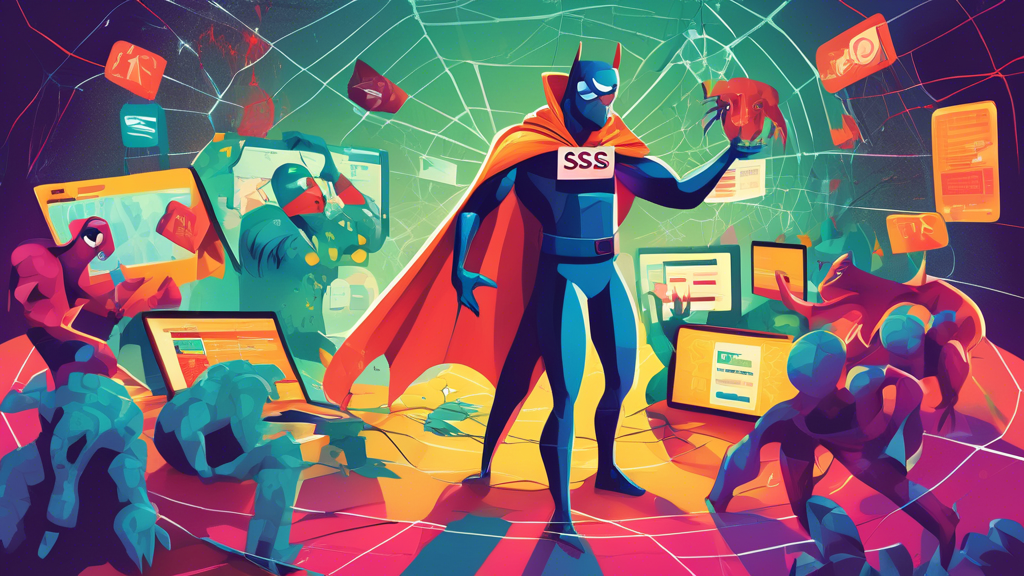Introduction
In the bustling cyber streets of the internet, web applications serve as both storefronts and back offices for businesses worldwide. But with great accessibility comes great risk, particularly from web security threats like Cross-Site Scripting (XSS) and Cross-Site Request Forgery (CSRF) attacks. These threats are akin to having invisible graffiti artists and undercover spies disrupting your online operations – not the kind of creative collaboration any of us want. In this article, we’ll dive into the what, why, and how of preventing XSS and CSRF attacks, equipping you with the knowledge to safeguard your web apps like a digital superhero. And don’t worry, we’ll keep the tech jargon to a minimum – after all, even superheroes need a break.
Understanding the Enemies: XSS and CSRF Explained
What is XSS?
Cross-Site Scripting (XSS) is a security breach that occurs when attackers inject malicious scripts into web pages viewed by unsuspecting users. Imagine visiting your favorite online store and, instead of the usual homepage, you’re greeted with a strange message or, worse, find your personal information has been stolen. That’s XSS in action – it’s like someone pasted a fake poster over the shop window.
What is CSRF?
On the other hand, Cross-Site Request Forgery (CSRF) is an attack that tricks the victim into executing unwanted actions on a web application in which they’re authenticated. Think of CSRF as a sneaky con artist pretending to be your friend to get you to unknowingly sign off on malicious transactions. Both of these threats can cause significant damage to users and businesses alike, making their prevention paramount.
Preventing XSS Attacks
Now that we know our enemies, let’s armor up against XSS attacks. Here are key strategies to shield your web apps:
- Sanitize Input: This is akin to having a bouncer at the door, checking if what’s coming into your app is safe. Ensure that all user-supplied data is scrutinized and cleaned before displaying it on web pages.
- Use Secure Frameworks: Sometimes, it’s wise to stand on the shoulders of giants. Many modern web development frameworks come with built-in mechanisms to escape user input automatically.
- Content Security Policy (CSP): Implementing CSP is like posting a list of authorized personnel at your fort’s entrance. It tells the browser to only execute scripts from the sources you trust and block any malicious injections.
Guarding Against CSRF Attacks
With XSS defenses in place, let’s turn our attention to foiling CSRF schemes with these protective measures:
- Use Anti-CSRF Tokens: An anti-CSRF token is a unique code that verifies user requests. It’s like giving a secret handshake; if the server doesn’t recognize it, the request is rejected.
- Implement SameSite Cookies: By setting SameSite attributes on cookies, you limit how cookies are sent with requests from external sites. It’s essentially telling your cookies to not talk to strangers.
- Verify HTTP Referer Header: Checking the Referer header can help determine if a request came from a trusted source. Think of it as checking the ID of someone who’s trying to enter a private event.
Best Practices for Comprehensive Web App Security
To fortify your web applications against a wider array of threats, here are additional best practices:
- Regularly Update and Patch: Keeping software up to date is like getting the latest vaccine shot – it protects you from the newest bugs out there.
- Security Awareness: Educate your team on the importance of security. After all, a chain is only as strong as its weakest link. And sometimes, that link didn’t know not to click on the phishing email.
- HTTPS Everywhere: Use HTTPS, not just for transactions but for everything. It’s like sealing your letters in an envelope instead of sending postcards for everyone to read.
Conclusion
Protecting web applications from XSS and CSRF attacks requires vigilance, awareness, and the right security practices. By sanitizing input, employing secure frameworks, and implementing protective measures like anti-CSRF tokens and Content Security Policy, you can significantly reduce the risk of these attacks. Remember, in the cyber realm, it’s better to be the digital superhero than the damsel in distress. So arm yourself with knowledge, stay updated, and let’s make the internet a safer place for everyone.
Need Web Development Help?
If securing your web apps sounds as daunting as climbing Mount Everest in flip-flops, don’t worry—we’ve got your back. Visit StarMetaverseGeorgia for all your web development needs, including security audits, advice, and anything else to keep your digital assets safe. Consider us your web security sherpas, guiding you safely to the summit without the frostbite.

Comments are closed